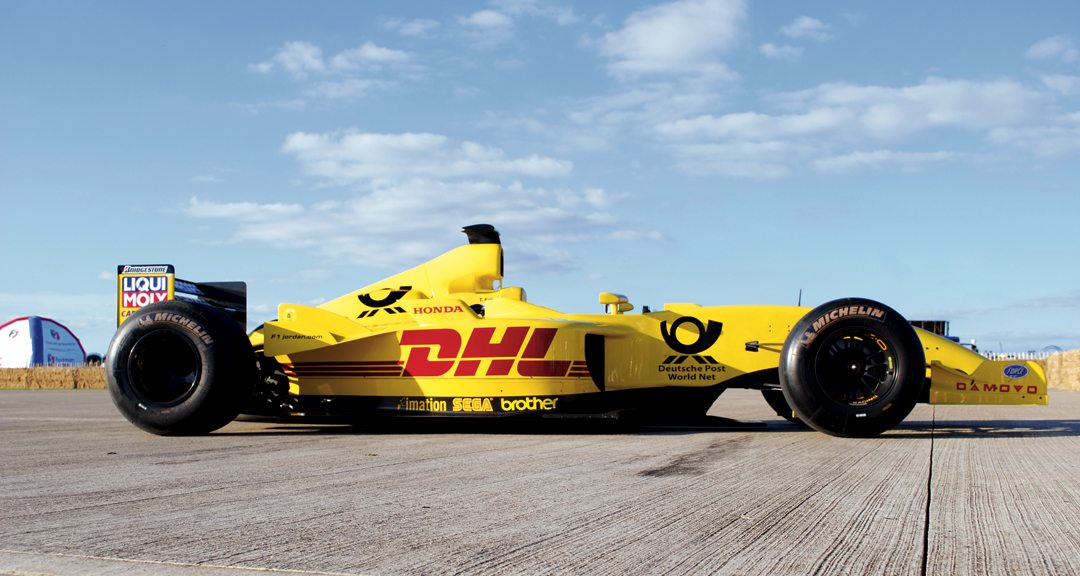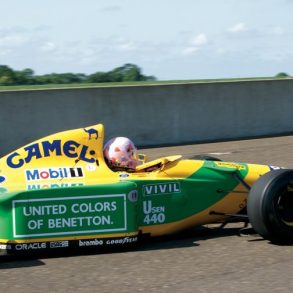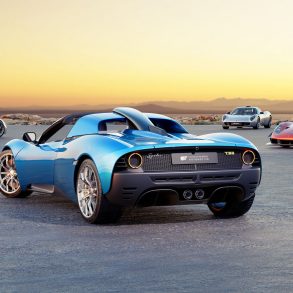In this profile we explore the life and afterlife of a more modern Formula One car. Indeed, what does happen to old Formula One cars? I mean those multi-million dollar hi-tech racers of not too many years ago. Each and every year the dozen, or so, competing teams produce a combined total of 80 to 120 racing cars to compete for the Formula One World Championship. In the main, these cars are simply discarded at the end of the racing season. Those cars with the badge of the prancing horse are cherished and have currency, the championship-winning car and those finishing in the top three, or those that have been the stead of notable drivers are earmarked for museums and a reasonable future beyond the racetrack. However, there are many that simply took part, made the numbers up, or had a less than competitive season. Our profile car, sadly falls into the latter category. So, here is the story of the 2002 DHL Jordan EJ12-Honda.
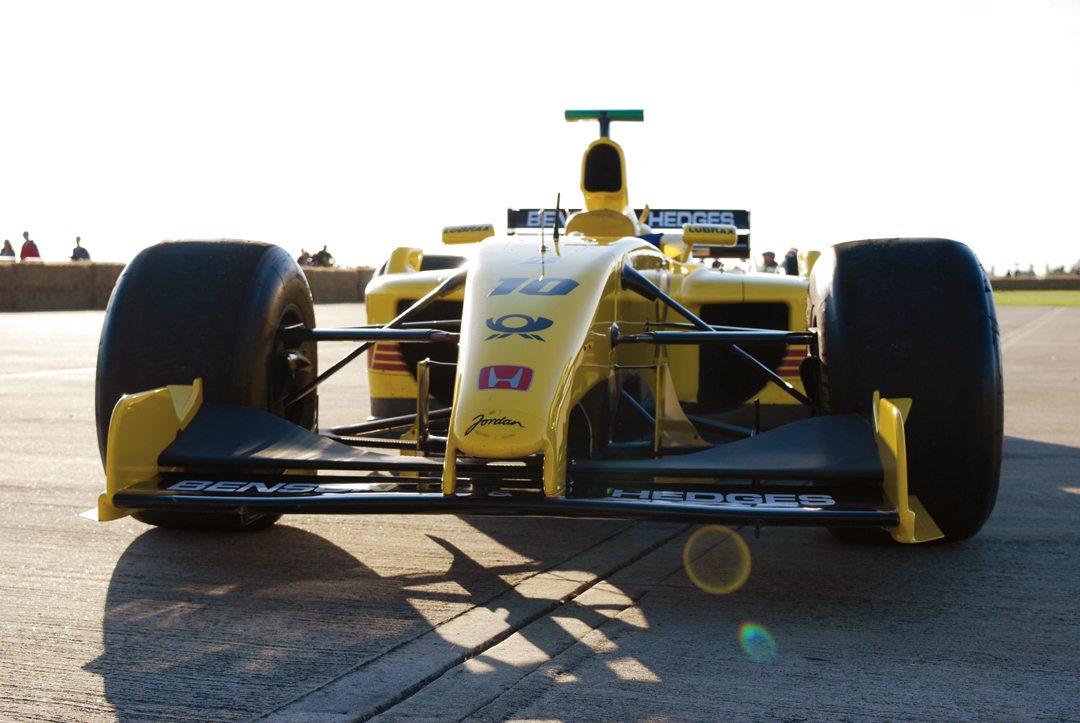
In the beginning
The flamboyant Eddie Jordan had entered his eponymous team for the 1991 season amid great publicity and passion. Competing in Grand Prix racing with a somewhat meager budget and a handful of ambitious staff had led to the outfit being hailed as “the people’s team,” a David to challenge the Goliaths of motor racing. It is well recognized that if the competition had been a beauty contest the team’s debut challenger, the Jordan 191, would have won the Championship hands down. It was one of the prettiest looking cars to sit on an F1 grid for many a year. Resplendent in typically Irish green livery, the Gary Anderson-designed machine looked sleek, curvaceous, slippery and ready to challenge. Former Grand Prix driver John Watson was the first to climb aboard the new Jordan Grand Prix car for its first shakedown and test drives. The regular drivers were the accident-prone Andrea de Cesaris and the luckless Bertrand Gachot, who famously came to the fore for assaulting a London taxi driver with pepper spray—not great publicity for a young aspiring Grand Prix driver! Gachot’s court case and subsequent spell in prison opened the seat for other would-be F1 stars, including the debut of the future master, Michael Schumacher, at the 1991 Belgian GP. Despite his alluring and beguiling persona, Eddie Jordan failed to charm the young Schumacher into staying. Shark-like, Tom Walkinshaw, boss of the Benetton team, snapped up the talented German, having seen Michael at close quarters racing in Group C for Sauber-Mercedes against his Silk Cut Jaguars.

Over its 12-year history, the Jordan team had highs and lows. As with all teams, finance was the key. In the early years, sponsors like 7Up, Fuji and Sasol had kept the team afloat, but the magic was to get revenue from a top line brand to attract top line drivers. Throughout this period of F1 history, and since the late 1960s, cigarette manufacturers were key revenue streams. Liveries from brands like Marlboro, Rothmans, Camel and West adorned on the top Grand Prix cars with very healthy budgets to go along. Barclay was the first such sponsor, but for 1996 Benson and Hedges was the company to assist Jordan, financially speaking, it finally gave the team that extra cash injection to compete on a relatively even playing field with the “big boys,” although it has to be said the top teams were spending astronomic amounts of cash. From the 1997 season, Jordan went the extra mile with various graphic nose cone designs. The 1997 car featured a snake’s head design, the 1998-2000 cars had a hornet design and lastly in 2001 a shark head motif was the theme. As cigarette advertising became banned in certain countries these designs helped keep the B&H branding alive. Benson and Hedges logos were replaced on the cars in countries where cigarette advertising was banned with Bitten & Hisses (1997), Buzzin’ Hornets (1998-2000) and Bitten Heroes (2001). From 2002 the fancy nose designs disappeared, as had much of the B&H budget—where tobacco sponsorship wasn’t allowed “Be on Edge” conveniently replaced the Benson & Hedges logo—the simple removal of certain characters was all that was necessary.
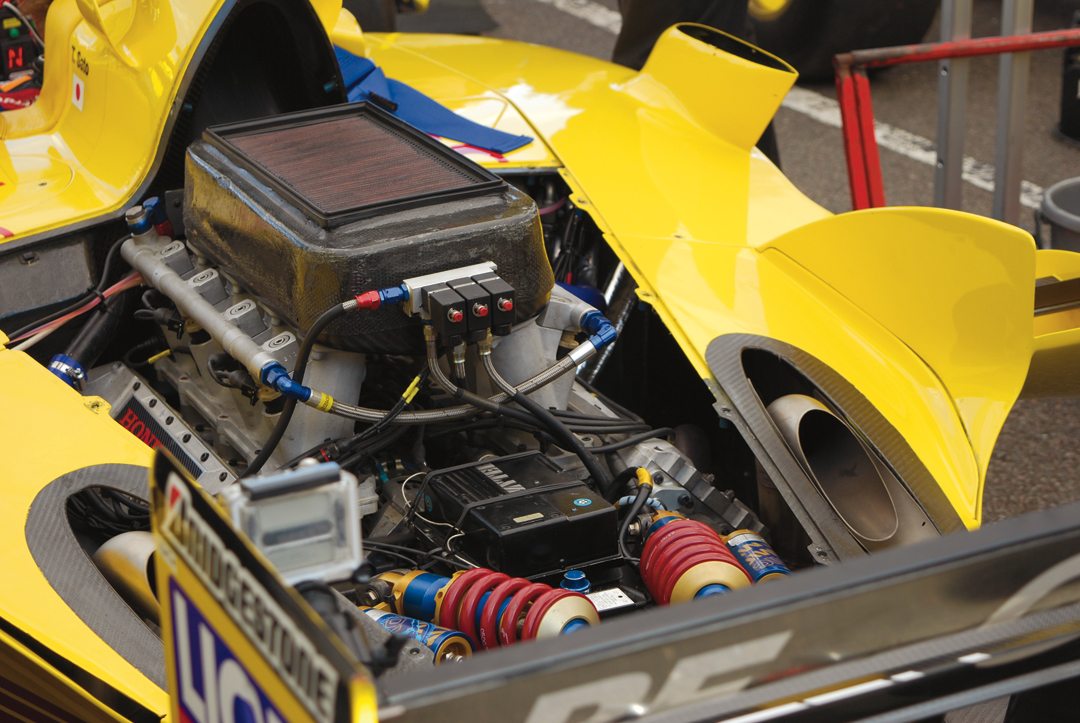
These relatively financially heady years brought a significant increase of staff and a general improvement of the Jordan team. Le Mans winner and F1 regular Martin Brundle was lured to the team in the first year of the B&H sponsorship, and former World Champion Damon Hill was able to give the team its first victory at a rain-affected Spa-Francorchamps in 1998. Although there was slight consternation in this victory as Hill’s teammate, Ralf Schumacher, felt he was faster and could have won the race. After the race, it was revealed that “team orders” prevented the teammates from racing each other, so Hill won with Ralf finishing 2nd. The team ended the year in 4th place in the Constructors Championship and injected a fair amount of encouragement for the following year. However, for 1999, Schumacher Jr. left the team and was replaced by fellow German Heinz-Harald Frentzen—a straight driver swap between Williams and Jordan. Results were now expected of the Jordan team, there was a certain amount of pressure on it from all sides to deliver. While former World Champion Hill’s season was beset with retirements, Frentzen was a regular visitor to the podium and won the French and Italian GPs. Frentzen’s results hoisted him and the Jordan team to a lofty 3rd place in the Drivers and Constructors Championships—albeit with less than 50 percent of the budget of either McLaren or champions Ferrari. The team was on a high, but unfortunately it wasn’t to last. The new millennium held little promise for the team.
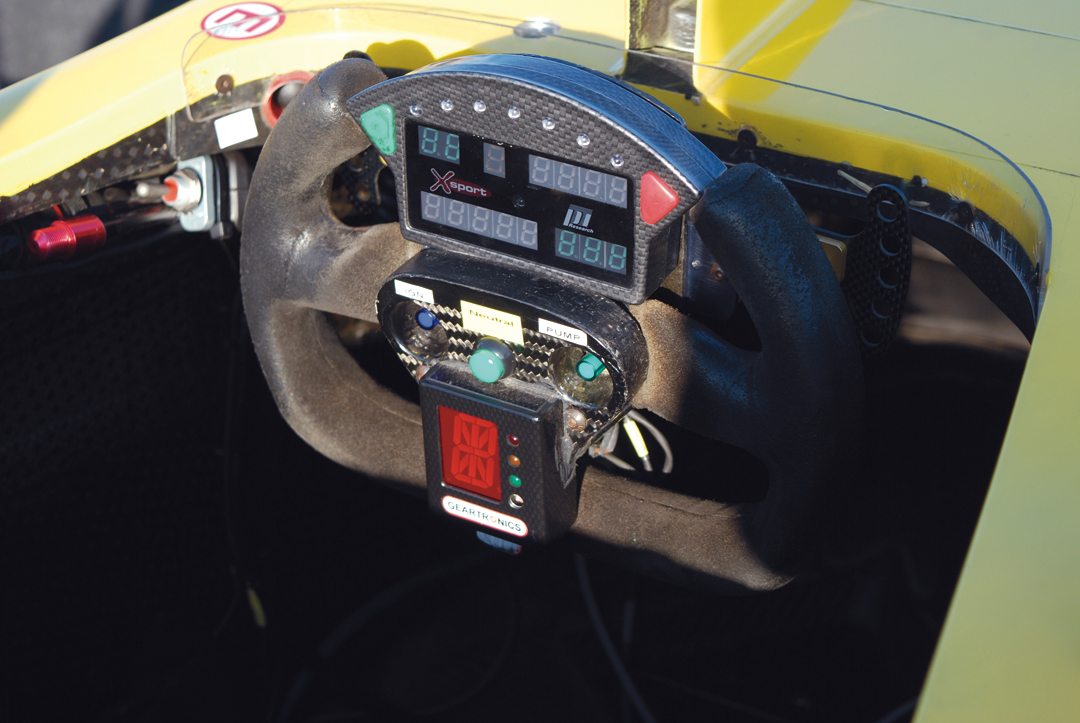
Beginning of the end?
The biggest problem was that F1 budgets across the board had gotten out of control. It was a case of the rich teams getting richer and the smaller teams relying on crumbs from the table. Jordan’s original meager, but ambitious, team had grown in number to around 250, and things were becoming organized by committee rather than just by one or two. There had been the usual merry-go-round of original staff leaving and many new faces joining. Like the early days of Vanwall, if too many fingers are in the pie things grind to a halt, progress hits a snail’s pace. That was the reality of the “new generation” of Formula One. In 1999, Damon Hill had retired from racing—he had initially said that year’s British GP would be his last race, but stayed until the end of the season. A promising rising star, Jarno Trulli, who had driven for Minardi and Prost in previous seasons, became Frentzen’s teammate. Whether Frentzen felt he’d nothing to prove against such young blood, or if it was due to the car, results simply faded and the impetus of the previous season simply melted into the background. Scoring a total of 17 points left the team in 6th place.
For 2001, there was new hope in the form of “works” Honda engines being available to the team rather than Mugen-Honda engines. Honda was already supplying BAR (later to become Honda F1) with engines, but Eddie Jordan had been promised that the most successful team of the two would secure long-term engine supply from the Japanese marque. Frentzen and Trulli started the season, the former seemed to rekindle some of the fire he’d shown in 1999 with three top-six finishes from the first four races. Trulli also had some good results with three top-six finishes out of five races. However, the team were back in the doldrums for the rest of the season following a series of retirements and driver changes. Frentzen left the team after the British GP due to alleged “contractual differences.” His place was initially taken, for two races, by Ricardo Zonta (a former BAR driver) and then by Jean Alesi, who was on the brink of retiring from F1.
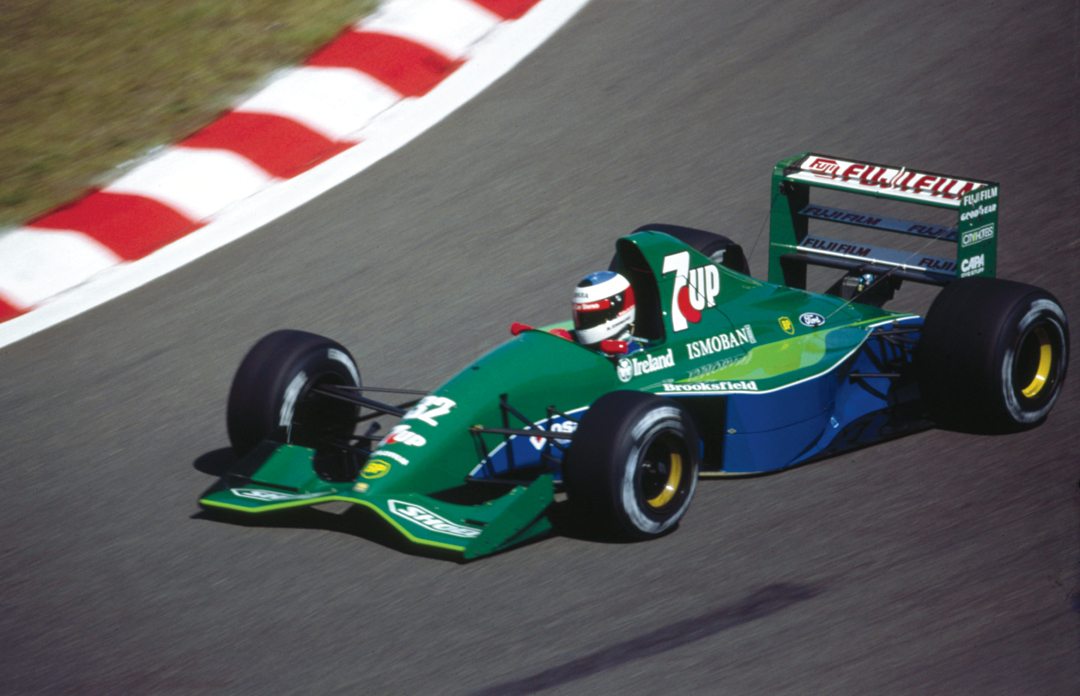
Prelude to the 2002 season
In terms of driver lineup, it was all change at Jordan for 2002. Giancarlo Fisichella returned to the Jordan fold after a couple of years with Benetton. Fresh from winning the 2001 British Formula Three championship, the 2001 Masters of Formula Three and the 2001 Macau Grand Prix was Honda’s dream driver, Takuma Sato. I had watched Sato racing during the 2001 round at Silverstone, he seemed to have a completely different understanding of racing lines than the norm and other competitors, yet somehow it worked. He won the races by a “country mile.” There was certainly something different about this young Japanese racer that made you watch him. Honda’s other team, BAR, had used Sato as a test driver during the 2001 season. The thing that seemed strange was the question of why didn’t BAR take this new young talent? Jordan had, however, finished above BAR in 2001, so perhaps this was some reward from Honda. Only time would tell. Many original staff members returned to the team, including Gary Anderson, who’d designed the Jordan contenders from the original Jordan 191-Ford through to the Jordan 198-Mugen Honda. Upon his return, he was reported to have commented about the significant increase of staff saying, “The place was full of collars and ties and clipboards, but yet no one appeared to be making any decisions.”
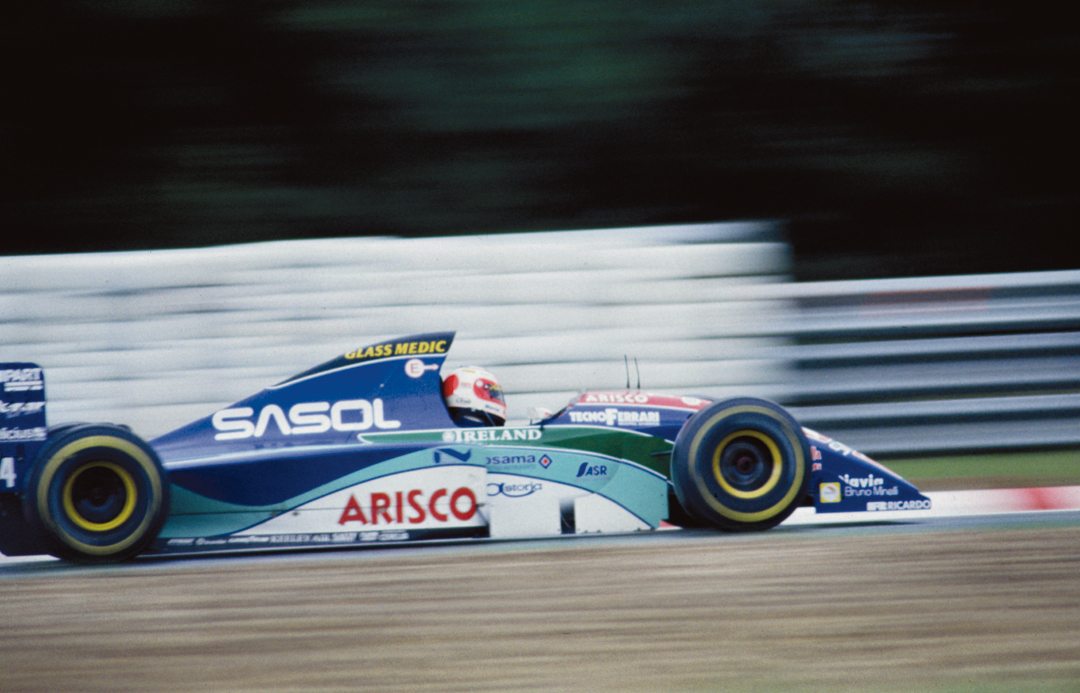
Photo: Paul Kooyman
The new Jordan EJ12-Honda had been on the drawing board for a few months by then, desiged by a team headed by Technical Director Eghbal Hamidy. Hamidy had come to the fore at Williams, working alongside F1 guru Adrian Newey during the successful early-to-mid-1990s winning championships with Mansell, Prost, Hill and Villeneuve, before Newey left Williams, mid-way through 1996. At around the same time, Hamidy joined Stewart GP as Chief Aerodynamicist. Working ahead, he was responsible for the aero packaging of the 1999 Stewart SF03. The car finished first time out at the Australian GP with former Jordan driver Rubens Barrichello taking 5th place, and went on to take a number of podiums, including a win in Germany (the European GP) with Johnny Herbert at the wheel. Hamidy, strangely, resigned his post at Stewart late in 1998. After some months he joined Arrows as Chief Aerodynamicist, working on the A21 to compete in the 2000 F1 championship. The Arrows A21 was a slippery car and held the fastest speed at most circuits during the season, but reliability problems had confined the team to scoring only seven points throughout the entire season. Many other teams appreciated Hamidy’s aero work. The full factory support of Honda for the 2002 season lured Hamidy away from Arrows to Jordan, to design the EJ12. Hamidy joined Jordan in February 2001, replacing Mike Gascoyne who’d left to join Benetton/Renault.

Photo: Paul Kooyman
The design of a modern F1 car is very complex as there are many variables to consider. To be at the cutting edge of technology, every day, week or month a designer can delay the process gives the team an advantage in regard to aero packages, rule changes and the latest thinking. Jordan’s Technical Director, Tim Holloway, explained at the time of the EJ12: “We try to work out when we want the car to be launched and work back from the production schedule to see when each component must be designed, in order for it to be made in time.” Working on the concept of a new car can be carried out during the previous seasons. Aero packages can be tested on track, as well as in the wind tunnel. Unlike today, F1 testing days were still in force where teams could try out new features, concepts and drivers on track without compromising racing strategy. In all it is considered there is a 26-week program from first drawing to first car complete, subsequent cars take considerably quicker time to produce as parts have already been designed and manufactured. This was the case with the EJ12.
It was November 2001 when Jordan announced it would be one of the final teams to launch its new car for the coming season. This wasn’t due to new technical regulations imposed by the FIA; indeed the regulations for the 2002 season were much the same as the previous year. Crash test rules had become more stringent, but rules governing telemetry had been relaxed and traction control was again allowed. Just before Christmas 2001, Fisichella and Sato were summoned to Jordan’s HQ, at Silverstone for a seat fitting—nothing strange about that, but also to have ear impressions taken to ensure earpieces would fit comfortably. In early January 2002, Fisichella and Sato undertook familiarization tests in the Jordan EJ11 at Spain’s Circuit de Catalunya, Barcelona. The idea of the test was to ensure the drivers were comfortable in their seats and Sato, in particular, could get used to using traction control. The test was held in damp conditions although the drivers were able to change from intermediate tires to grooved slicks as the circuit dried.
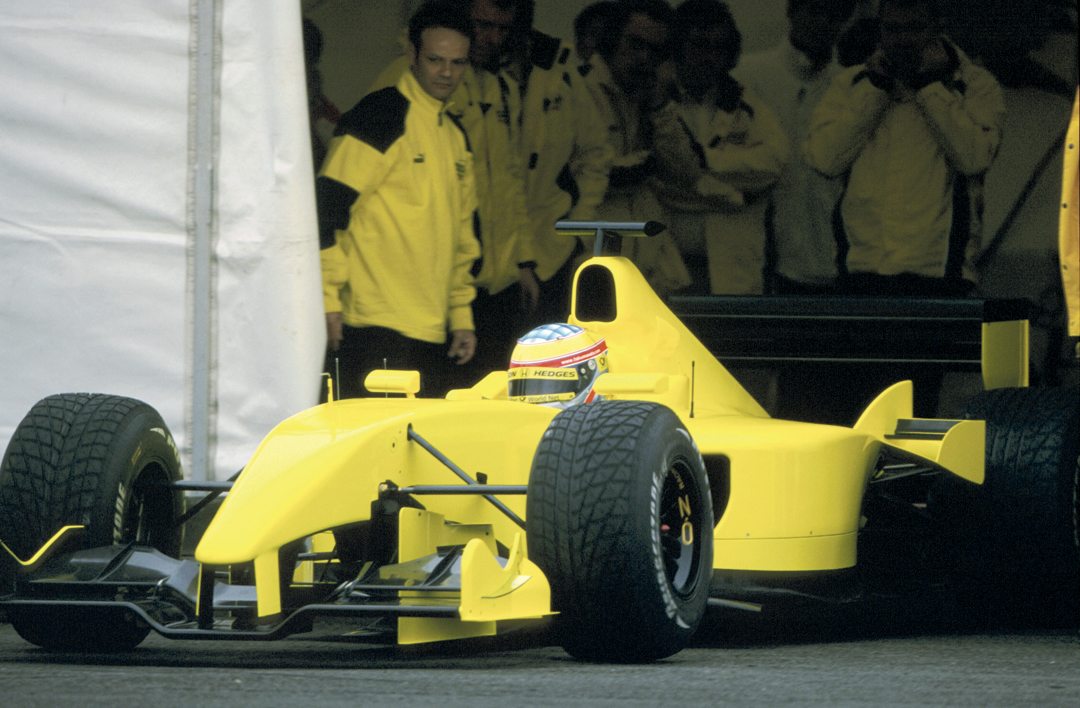
Photo: LAT Photographic
DHL Jordan-Honda EJ12
After some frantic days and working throughout the weekend and to the early hours of Monday morning, the new car eventually hit the track for the first time on January 21, at Silverstone’s South Circuit. Typically, the deep mid-winter weather conditions at Silverstone were not really conducive to hard and fast running, but it sufficed for Sato to complete the first systems check, just before lunch. Sato, Technical Director Hamidy and Head of Race and Test Engineering Anderson were all satisfied with the short test and upbeat for the coming season. They also took time to thank the team for the tremendous workload undertaken over the past months to produce the car.
The car itself had a distinctive new look, but was in essence more a revision of the 2001 EJ11 than a completely new concept. Modifications included much work to the front to accommodate a new suspension package, double wishbones with pushrod-activated torsion bars. Although having a fully carbon fiber monocoque, there was still a need to reduce weight and to alter the center of gravity of the car. As with all F1 cars, side impact protection for the drivers was paramount and governed by strict regulation. Jordan had gone some way with the new car to make the EJ12 sidepods more efficient, but the side impact structure smaller. The car bore the now Hamidy hallmark of two upright ear-like aero vanes each side of the central air box. These “ears” were first seen on Hamidy’s Arrows A21. Honda had produced a new DOHC V10 engine, the RA002E, which was installed longitudinally in the new car. Drive was through Jordan’s own revised seven-speed gearbox. The hope was reliability issues of the previous year could be ironed out. At the launch, Technical Director Hamidy remarked, “The Jordan EJ12-Honda is the culmination of a great deal of work from a very diligent group of individuals. Although it looks quite different, the overall design is based on the EJ11 but with some major changes, specifically to the front and rear suspensions.” Throughout the 2001 season it was a complex mixture of lack of understanding of the new works Honda power unit, getting to grips with the dynamics of the car as a whole and certain deficiencies in the manufacture of parts that caused so much unreliability.
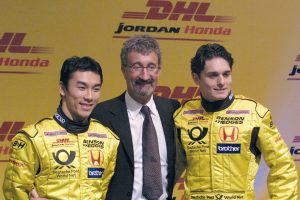
The new season continued with a heavy testing program. Fisichella got his first sit in the new car on January 22, again on the Silverstone South circuit. His job was more involved than Sato. As an experienced Grand Prix driver he was expected to consider and comment on various aspects of performance. Suspension setup, systems check and overall balance of the car left Fisichella in an overall optimistic mood. However, he was the first driver to crash test the car—smashing the rear end when he lost control at Stowe corner on a damp track. Fisichella was not injured, but there was a fair amount of damage to the rear of the car. Just a week later the team was back in Spain, testing at Barcelona’s Catalunya circuit. This time regular drivers Sato and Fisichella were joined by test driver and F1 rookie Marcel Lasée. Lasée was a German rising star, although time has told his rise wasn’t in the top flight of racing, his call-up was possibly in deference to German sponsorship on the car. Further pre-season testing took place at Valencia, Spain and at Silverstone—Jordan’s local test track. The culmination of these tests showed some promise, but overheating, oil pressure and flow, suspension geometry, brakes and general handling were all being addressed. Fisichella went some way to make amends for crashing at Silverstone by heading the time chart at one stage during the busy schedule.

Photo: Pete Austin
February 22, 2002, the official launch of the new car and Jordan had a new headline sponsor—DHL, now a company synonymous with and owned by Deutsche Post (since 1998), but initially a company set up by three North Americans, Adrian Dalsey, Larry Hillblom and Robert Lynn. DHL had been a minor player with Jordan for a couple of years, but due to the squeeze on cigarette advertising B&H was now in the background and DHL stepped up to the plate. As with new F1 car launches of the day there was a dramatic unveiling, the new EJ12 was packaged up and flown by DHL from the UK to Brussels airport, Belgium, and unveiled in front of an invited throng including F1’s world press contingent. In true circus style, the DHL airplane came to a standstill in the hanger, a lift was put in place and raised to the open door to receive the car. Slowly the car was moved into place and delivered in true DHL style to Eddie Jordan. As he signed the delivery note he remarked, “This is an exciting and historic day for the team.”
The driver lineup of Giancarlo Fisichella—at the time thought by many commentators to be one of the top three or four Grand Prix drivers, although still awaiting his first win—and the exuberant young Takuma Sato fresh from much success the previous season the team couldn’t wait to get to Melbourne for Round 1 of the World Championship, the Australian GP. Unfortunately, the first Grand Prix would be the benchmark of subsequent races, as at the first corner Fisichella was caught up in a melee when seven cars were eliminated from the race. Teammate Sato was lucky to be in the race at all qualifying below the 107 percent ruling and only allowed on the grid by special dispensation. Sato’s race finished on lap 12 with electrical problems. After three further Grand Prix races at Malaysia, Brazil and San Marino, mid-table qualifying and poor, or non-finishes left the team with no points on the table. Just days prior to the Spanish GP, team boss, Eddie Jordan announced 15 percent of the workforce would be shed, including top line managers. He also said he’d parted company with Technical Director Hamidy, stating an “amicable” agreement had been reached. It also came to light that Hamidy had officially been “on holiday” since the start of the season and had had no involvement in work at the factory since.
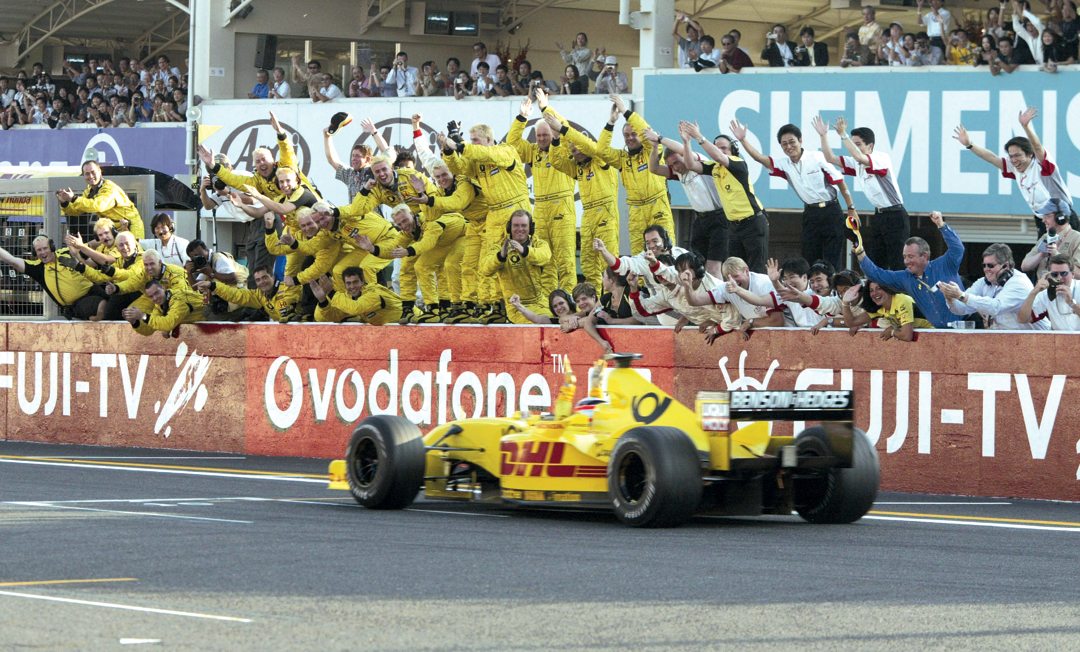
Fisichella went some way to help the cause by scoring 5th-place points in Austria, Monaco and Canada. On the other hand, Sato had a series of spins, collisions and accidents, the most serious in Austria when the young Japanese driver was left hospitalized suffering from concussion. The season continued with non-finishes due to electrical and hydraulic issues, or out of the points. The race of the season was the last round at Suzuka, for the Japanese GP. Sato not only wanted to put up a good show in front of his home crowd, but the team needed points to finish above BAR, the other team using the Honda engines. On this occasion, the Jordan pair occupied the fourth row of the grid, in 8th and 9th places, with Sato surprisingly outqualifying his teammate. Japanese fan power obviously lifted Sato as he drove as though his life depended upon it throughout the race finishing a very credible 5th and leaving Jordan in 6th place in the Constructors Championship, two points and two places above BAR.
Outside of the Jordan team, the 2002 F1 Championship found the Ferrari machine grinding out another astonishing year of great results and performances. Michael Schumacher won the title in record time, with a record number of wins, a record number of points and equalling the great Fangio’s three straight titles. Jordan would compete for a further two seasons before being sold. After morphing several times it has since become Force India.
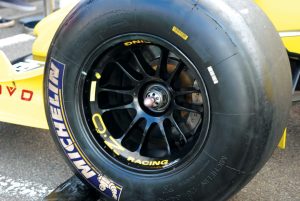
Afterlife
Despite costing around £3.5-4 million to produce, as with most Grand Prix cars, the EJ12 was superseded by the EJ13 the following season. A Grand Prix team will usually use the previous year’s cars for promotion and demonstration purposes and they will then be cast aside and sold to collectors or given away in a package deal to sponsors. When new cars are waiting to hit the track, the old car is used for initial tests of certain components, settings, wings or instruments. Not so with the EJ12, as the EJ13 was a completely new car, powered by a Ford Cosworth V10 engine. So, the EJ12 cars were somewhat surplus to requirement.
I haven’t mentioned any particular chassis numbers in this profile. I believe chassis numbers, even in this relatively modern era, cannot necessarily be relied upon. It is said Jordan built six EJ12 cars, but I’ll simply refer to the profile car as “our EJ12.” So, “our EJ12” found its way from the UK to a collector of cars in Sweden and after a while was put up for sale on the open market. The present owner, Barry Walker, a keen enthusiast, purchased the car about 12 months ago. He’d previously been part owner of an ex-Riccardo Patrese Benetton B193 and an outright owner of an Orange Arrows-Hart V10. The Jordan EJ12 (now sans the Honda engine—they were available on a free rental scheme to the Jordan F1 team, but remained property of the Japanese marque) is fitted with a three-liter Judd KV8 engine, manufactured by Engine Developments, with drive provided through a Hewland 5-speed gearbox. The cost was a fraction of the original build price. “It’s just great to get to drive your pension fund around,” Barry enthused. “I think I’ve got a great investment that will increase in value over time.” The car has been used, and is available, for demonstration runs across Europe, and has been seen recently at Denmark’s Aarhus Classic Races, Zandvoort in the Netherlands, as well as the Silverstone Classic and Piston and Props, Sywell, in the UK. The car has been completely fettled to its original spec other than the engine and gearbox. One notable thing is that the period drivers, Sato and Fisichella were some 6-8 inches shorter in height than the car’s current driver. Future, modifications will be needed to rectify this imbalance in order to assist airflow to the engine.
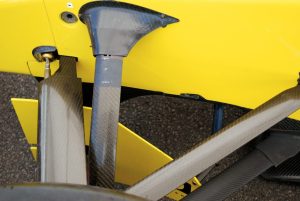
Driving Jordan EJ12
Our test run is around the picturesque street circuit in the city of Aarhus, the second largest city in Denmark. This early Viking settlement on the east coast of the Jutland peninsula is a popular coastal resort and has boasted a great Classic Car Racing Festival for the past couple of years. On a bright and sunny day the EJ12 is garaged in a temporary pit structure—poles apart from the usual high-tech surroundings the Jordan team would have had during a Grand Prix weekend. As with performance cars of this nature, simply switching a key to start the engine is not applicable. A proper and exacting routine of pre-heating fluids is required. On this particular Jordan, or rather Judd engine, fluids have to attain 50 degrees C, which takes some three hours to achieve. Although it appears all part of the pantomime of F1, failing to do this would mean disaster.
Once seated in the car, you begin to appreciate something of the performance Grand Prix drivers go through race by race as they prepare on the grid. While the test is nowhere near ultimate racing speed, fluid levels, fitness and agility are paramount as we climb into the seat that will become our cocoon for the next few minutes. Strapped in by the six-point harness, although restricted, movement is sufficiently free to operate controls, and the steering wheel can now be attached. Compared to the complexities of a modern F1 steering wheel, this 2002 version is quite bland, having a small number of digital readouts to show, among other things, revs and the gear selected. Gearshift is by a paddle system attached behind the wheel, left for downshift and right for up. There are just three buttons, a central button to select neutral and two smaller buttons each side, the blue one to the left for ignition and the green to the right to activate the pump. To the left of the cockpit, on the minute dash is the all-important red fire extinguisher button.
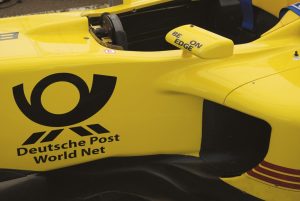
All prepared and ready for the off, we select first and then second gear to leave the pit lane and head out onto the street circuit. The first run is along the pit straight, Beach Road, running parallel to the sea front with a very shallow right, midway along. Through the gears to fourth the engine screams to an ultimate crescendo at a maximum of 8,000 rpm as we build good speed to the first corner. Very hard on the brakes, it’s a tricky right-hand chicane, right-left-right and we’re through. Traveling inland, we climb uphill on a quite bumpy surface leading to the Oddervej. Work had already been carried out to raise the ride height of the car to counter such problems, although not too much out of spec with the original. EJ12 is taking this temporary road course very much in its stride, but as we accelerate from second into third gear a little too much right foot, together with the uneven surface, leads to a “moment” as the car dances with the changing road camber. Thankfully, collecting the car we’re now back in full control. Braking and changing down we negotiate another tight right-hander heading through King’s Road, a wooded section past the Castle Kongevejen and by the Marselisborg Palace, on the left, the summer home of Queen Margrethe II of Denmark. This is a quite narrow section of the circuit and the temporary concrete barriers and fencing seem to squeeze and play mind games as we head toward our next chicane—put in by the organizers and having the desired effect of slowing the cars down—right-left-right now through to a mini island (just a menacing slightly raised surface). Now we’re heading back downhill along Nielsen Road, nearing the completion of our lap and back onto Beach Road. Up to fourth we’re ready to negotiate yet another mini island, Aros Insurance Svinget, right-left-right to re-join the seafront section and complete the lap. Our second, third and fourth laps were not so staccato-like in nature as the first, as car, driver and circuit conditions became more familiar with each other. The fastest part of the circuit is the wide Beach Road where speeds of 125 mph can easily be achieved.
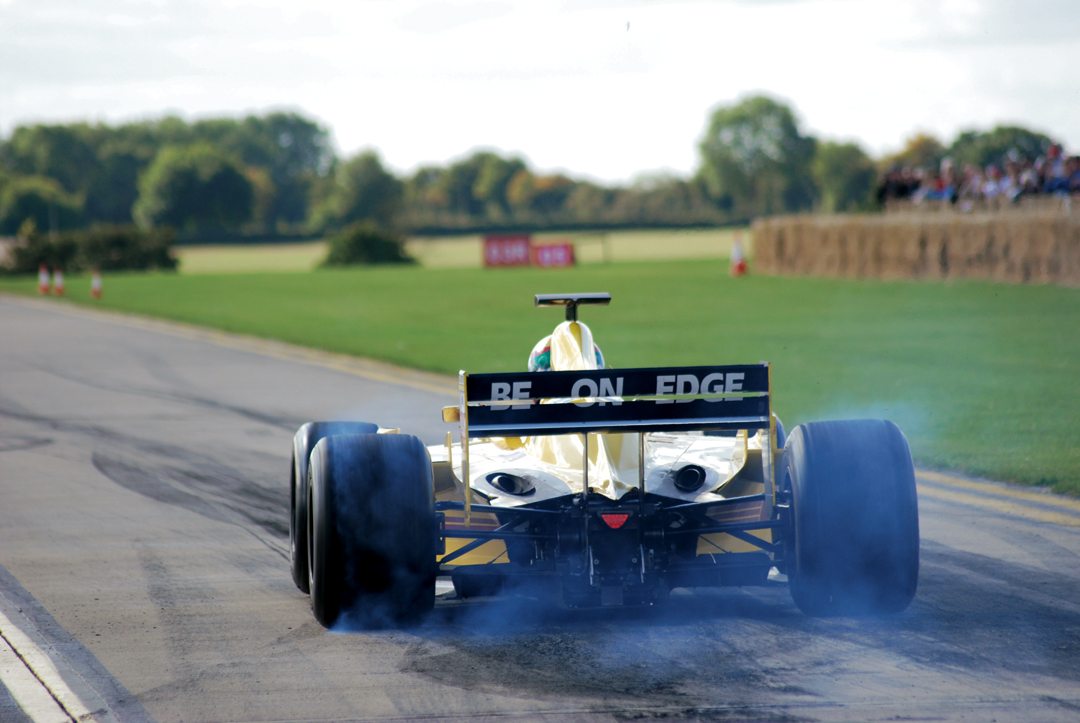
On the whole, the car, which would only have used the streets of Melbourne and Monte Carlo in period (much smoother than those encountered today) has performed reasonably well. We weren’t driving at full throttle—nor should we be, given the conditions, but the car behaved in a manner pleasing driver and spectators alike. It is, however, quite easy for the informed eye to see that this car, in the day, was no match for the bigger teams like Ferrari, McLaren and Williams. For whatever reason, reliability was an issue that left the team struggling even with the minnows. However, one objective was accomplished, Jordan beat BAR, which must have given Eddie (Jordan) some small satisfaction. Today, this Jordan EJ12 is the pride and joy of an enthusiastic fan of Formula One. It’s clear to see it’s his pride and joy…and his pension fund too! In the early days of the F1 World Championship, indeed across the various forms of motor racing, cars were simply disposed of without trace. In recent years, history and heritage has become a major player in our sport. Maybe, like Barry Walker, a small part of it could be yours?
SPECIFICATIONS
Chassis: Carbon fiber monocoque
Engine:Period: Honda RA002E V10, Current: Judd / Zytec F3000 3-liter V8
Electronics:Period: Honda / TAG / Jordan, Current: Zytec / Motec
Transmission:Period: 7-speed longitudinal automatic sequential, Current: Xtrac 5-speed paddle shift
Suspension: Front: double wishbones, push-rod activated torsion bars, Rear: double wishbones, push-rod activated torsion bars
Shocks:Period: Jordan/Penske, Current: Dynamic
Wheels:OZ Racing
Tires:Period: Bridgestone, Current: Michelin
Brake discs:Period: Brembo, Current: Ceramic
Calipers: Brembo 6-piston
Steering:Jordan power assist
Wheelbase: 3124 millimeters
Front track: 1500 millimeters
Rear track:Period: 1418 millimeters, Current: 1422 millimeters
Weight: Period: 1322.8 pounds / 600kilograms including driver, Current: 1452 pounds
Resources / Acknowledgements
Bibliography
Autocourse 2002-03 – Hazelton Publishing
Formula 1 Yearbook 2002-03 – Parragon
Race Without End by Maurice Hamilton
Against the Odds-Jordan’s Drive to Win by Jon Nicholson and Maurice Hamilton
Grand Prix Who’s Who – Steve Small
Periodicals
Motor Sport
Autosport
Racecar Engineering
F1 Racing
Thanks
Sincere thanks to Barry Walker for the use of his car and the hospitality of his team.
Thanks too to Silverstone Circuits and Sywell Aerodrome


